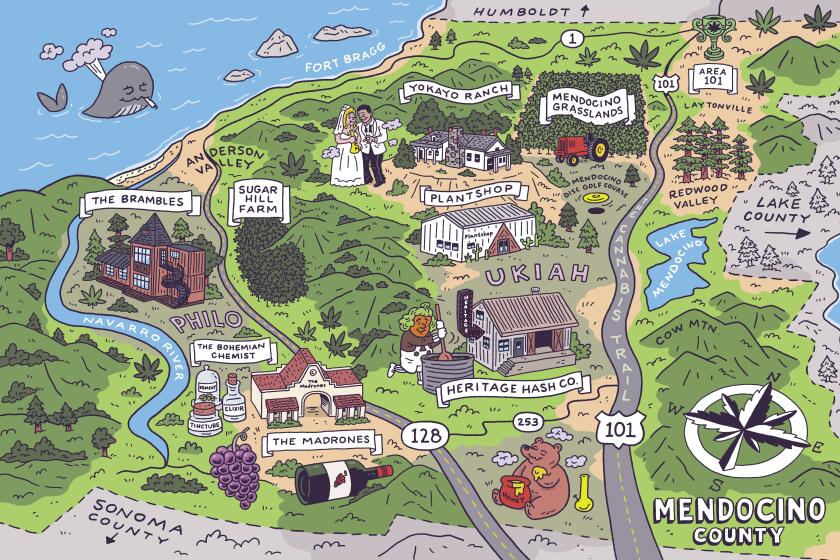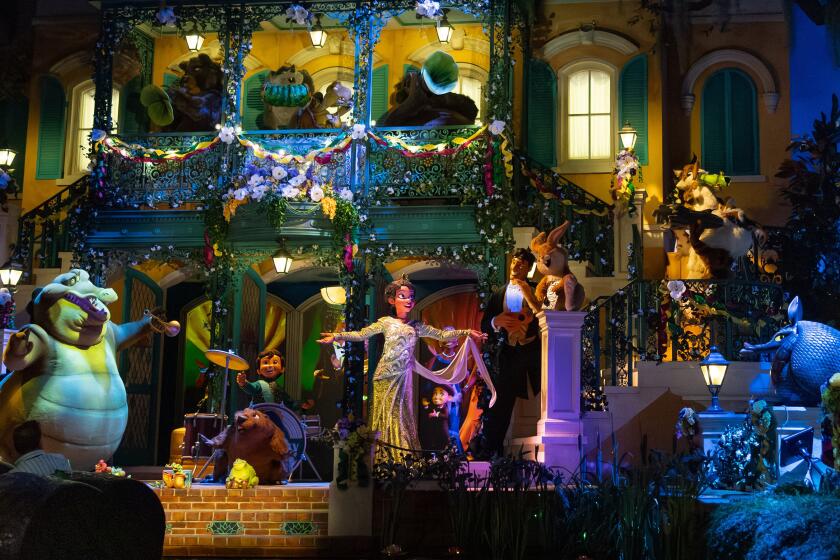Earning His Wings, and the Right to Swagger Just a Bit
I sometimes wondered why I’d ever thought flying lessons were a good idea.
Like the first time I soloed, when I looked down at that suddenly tiny landing strip and realized that I really had to get it right this time.
And the time when the calm at 9,500 feet was shattered by a controller’s radioed report that I had “traffic at 1 o’clock--a Boeing 727.”
And the time I was lined up for a landing in San Diego County and discovered that I was preparing to set down at the wrong airport.
But in each case, I remembered what my instructor had told me, did what I was supposed to do (successfully, if inartistically), and everything turned out all right.
And there were times when flying that little plane was a pure delight.
Like my first night flight over Los Angeles, when the sky was clear and I could see for 100 miles and the city below was a carpet of sparkling gemstones.
And the warm, soft day over Santa Barbara, with the engine humming happily and the plane trimmed just right, when I started thinking about saving up for one of those sexy leather flight jackets.
And the morning during my first extended cross-county flight, when the girl at the airport hamburger stand in Fresno asked me if I’d just arrived in that plane over there, and I was able to respond, with only a touch of swagger:
“Yeah, I’m the pilot.”
*
For me, qualifying as a private pilot in a single-engine plane took time (about four months), money (about $6,000) and a fair amount of application, both in terms of learning how to operate the plane and of mastering the complex system the Federal Aviation Administration has devised to keep everyone from bumping into one another.
The arcane argot of the air traffic controllers starts making sense and the navigation charts gradually evolve from meaningless tangles of numbers, lines and splotches of color into precise diagrams that explain how and where--and how not and where not--to go.
Just about every preconception I had about learning to pilot a plane turned out to be wrong.
I had assumed that the first few lessons would be spent entirely in a classroom, pondering the theoretical. But an hour after I arrived at Santa Monica Airport, I found myself on the tarmac, about to get behind the command controls of a real airplane. Fortunately for all concerned, my instructor would be right beside me, sitting behind the other set of controls.
After receiving clearance from ground traffic controllers, you taxi to a run-up area near the runway. There, or somewhere en route, you check the plane’s instruments, adjusting them as necessary. You check the engine. You check the controls.
Most of these checks are quickly committed to memory, but that’s not good enough. To make sure you haven’t forgotten anything, you run carefully through a written checklist, each and every time you fly. Even veteran airline pilots do it this way.
After receiving further clearance from the control tower, you taxi onto the runway and take off.
*
By then, if it’s your first flight, you’re discovering that there’s another difference between cars and airplanes--the controls don’t work the same way. Or at least not the way you might expect them to.
For instance, to turn the plane while on the ground, you don’t use the thing that looks like a steering wheel, you use pedals on the floor. To turn in the air, you use both the wheel and the pedals.
Advancing the throttle makes the plane climb, rather than speed up. Pulling the nose up can make the plane sink, rather than climb.
There are controls you’ve never had to worry about before--a “trim wheel” that you use to keep the plane in level flight, a carburetor “mixture” knob that must be adjusted according to your altitude, and hinged plates at the back of the wings, called “flaps,” that you deploy on landing.
And while you’re trying to master all that, people keep talking to you in airspeak. Your instructor has told you to “fly the pattern,” which he says is “left closed traffic.” The tower controller asks you to “report downwind abeam” and then tells you that “you’re No. 3, behind the Comanche.” Seconds later, you hear him tell someone else that you’re on “one-mile final.”
And then comes the landing--the first moment of truth. It’s then you discover that the machine you’re in is being asked to make the transition from a moving, flexible medium (the air) to a stationary, inflexible one (the ground).
*
*
As the lessons progress, the concentration on landings and takeoffs gives way to more pleasant tasks--cross-country trips during which you actually take off in one place, fly for an hour or more and land in another.
Navigation is now a principal task, requiring you to use a calculator, your instruments and features on the ground to figure out where you are, where you’re going, how long it will take and how much gas you’re going to consume.
Knowing wherever you are is especially important in Southern California because--unless you have explicit permission to enter it--much of the airspace is either off limits to all but military aircraft or reserved for airliners using the area’s major airports.
You spend a lot of time looking out the windows, not just to admire the scenery.
Remembering that engine failure is always a possibility, you scan the ground for places you could land--level fields, golf courses, wide roads, even supermarket parking lots. And you watch for other aircraft.
There are hours of study, spent poring over textbooks explaining everything from maintenance to meteorology, followed by a written FAA examination.
And there are hours of practice in that little plane, working on takeoffs, flight maneuvers and landings, followed by the second moment of truth--a “practical exam” that involves several hours of flight tests under the watchful eye of a licensed FAA examiner.
For a newspaper reporter then 53 years old, it was an unsettling return to emotions not felt since the last final examination in school.
But the examiner was patient, and in the end, as the little plane settled down onto the runway at Santa Monica Airport, I heard the most wonderful words in the world:
“OK. That’s fine. You’ve got your license.”
Sign up for The Wild
We’ll help you find the best places to hike, bike and run, as well as the perfect silent spots for meditation and yoga.
You may occasionally receive promotional content from the Los Angeles Times.



